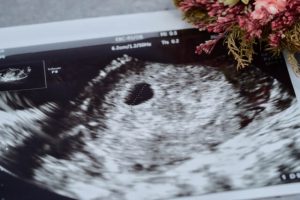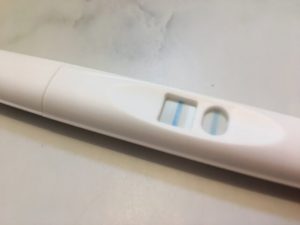In Japan, a specialized committee for NIPT (Non-Invasive Prenatal Testing) has been established, and regular meetings are held to discuss its implementation. This article introduces the situation of NIPT testing in China.
The Situation of NIPT (Non-Invasive Prenatal Testing) in China

Here, we introduce the situation of NIPT (Non-Invasive Prenatal Testing) in China.
Significant Decrease in Birth Rate in China
Due to the previous one-child policy in China, the birth rate has significantly decreased. In 2022, the number of births dropped below 10 million for the first time to 9.56 million. This is a decrease of 1.06 million from 2021, when it was 10.62 million.
Currently, the Chinese government has allowed the birth of a second child since 2016 and the birth of a third child since 2021. However, despite these allowances, the birth rate continues to decline. Looking at the birth order, the number of first-born children decreased by 270,000 from the previous year, the number of second-born children decreased by 680,000, and the number of third-born children decreased by 110,000. It can be said that the decrease in second-born children has had a significant impact on the overall decline in the birth rate.
Population Decline in China
In China, population decline is progressing alongside the decrease in the number of births. According to the data released by the National Bureau of Statistics of China, the total population in 2023 was 1,496.7 million. This indicates a decrease of 2.08 million from 2022. On the other hand, the number of deaths is on the rise. In 2023, there were 110 million deaths, an increase of 690,000 from 2022. With the number of births falling below 10 million and the number of deaths exceeding 10 million, it is believed to be contributing to the population decline.
Disclosure of Fetal Gender Information is Prohibited in China
In China, NIPT (Non-Invasive Prenatal Testing) has been introduced since 2011. Until 2016, the one-child policy was implemented, and there was a strong preference for the birth of boys as a labor force to support elderly life. As a result, the sex ratio at birth in 2008 was 120.56 boys to 100 girls, with boys being born about 20% more. Against such a backdrop, disclosing the sex of the fetus is prohibited by law in China.
Since the abolition of the one-child policy, women in their late 30s to 40s, who fall into the category of advanced maternal age, have begun to consider having a second child, leading to an increase in demand for NIPT. In China, there is also a belief that children with disabilities threaten the safety of the entire family due to the burden of care. Therefore, many people are likely to consider clinical research such as NIPT testing to know about genetic abnormalities in advance.
Blood Sample Transportation Required to Determine Gender
In China, where determining the sex of the fetus is prohibited, if one desires to know the sex of the fetus, they need to transport the pregnant woman’s blood sample to Hong Kong for NIPT. It’s important to note that determining the sex of the fetus is also illegal in Hong Kong. In China, where there is a strong tendency to preserve superior genes, illegal sex determination has been carried out, leading to ethical issues.
From 2011 to 2014, there were no regulations governing NIPT, so diagnoses were conducted freely. However, since 2016, it has been operated according to guidelines established by the National Health and Family Planning Commission.
Diseases Targeted by NIPT in China
The diseases targeted by NIPT in China include trisomy 13, trisomy 18, trisomy 21, and some microdeletions.
Trisomy 13: Patau Syndrome
Trisomy 13, also known as Patau syndrome, is a chromosomal abnormality caused by an extra copy of the 13th chromosome. Babies born with trisomy 13 often have small stature and may exhibit significant abnormalities in the brain, eyes, face, and heart.
Trisomy 13 is estimated to occur in approximately 1 in 5,000 to 1 in 12,000 births. The extra chromosome is generally inherited from the mother, and the risk of occurrence increases with the mother’s age.
Specific symptoms of trisomy 13 include delayed brain development, cleft lip or palate, small eyes, absent or abnormal pupils, and underdeveloped retinas, with many abnormalities concentrated in the head and face. There is no specific treatment for trisomy 13. The majority of babies with trisomy 13 die before reaching one month of age, and less than 10% survive beyond one year.
Trisomy 18: Edwards Syndrome
Trisomy 18, also known as Edwards syndrome, is a chromosomal abnormality caused by an extra copy of the 18th chromosome. Babies born with trisomy 18 often have small stature and exhibit physical abnormalities and organ dysfunction.
Trisomy 18 is estimated to occur in approximately 1 in 3,500 to 1 in 8,500 births. Fetuses with this condition often result in miscarriage. The extra chromosome is typically inherited from the mother, and the risk of trisomy 18 increases with maternal age, particularly for women aged 35 and above. Additionally, trisomy 18 is more commonly observed in female infants than male infants.
Babies with trisomy 18 may have poor muscle and body fat development, resulting in small and weak cries. They also tend to have small mouths and jaws. About half of babies with trisomy 18 die within the first week of life, and only about 5-10% survive to one year of age. However, in recent years, there have been cases of individuals with trisomy 18 reaching adulthood, although this is rare.
Trisomy 21: Down Syndrome
Trisomy 21, also known as Down syndrome, is a chromosomal abnormality caused by an extra copy of the 21st chromosome. Babies born with trisomy 21 often exhibit developmental and intellectual delays, along with distinctive head and facial features and short stature.
Approximately 95% of cases of Down syndrome are caused by trisomy 21, resulting in individuals with 47 chromosomes instead of the usual 46. It is rare for the extra chromosome to be inherited from the father, and the risk of occurrence increases with maternal age.
When a woman with Down syndrome becomes pregnant, there is a 50% chance that the baby will also have Down syndrome, although many pregnancies end in miscarriage. Babies with Down syndrome often have congenital abnormalities in the heart and digestive system. Compared to trisomy 13 and trisomy 18, the prognosis for trisomy 21 is relatively good. While individuals with Down syndrome may experience accelerated aging, they can grow into adulthood.
Percentage of People Receiving NIPT in China
In China, the proportion of pregnant women undergoing NIPT is approximately 25% to 49%. The screening targets high-risk pregnant women rather than all pregnant women. It is typically conducted on pregnant women who have tested positive in traditional non-invasive screening tests.
Issues with NIPT in China
Here, we introduce issues related to NIPT in China. Currently, there is concern over the secondary use of prenatal screening data developed jointly by China’s largest genetic analysis group and the Chinese military.
Military Holding Data of Prenatal Tests
Recent research has revealed that there are provisions in place stipulating that diagnostic data from prenatal screening developed jointly by China’s leading genetic analysis group and the Chinese military be submitted to Chinese authorities if it relates to national security. The prenatal screening conducted by the Chinese group is utilized by millions of pregnant women worldwide. So far, over 8 million women worldwide have undergone the screening, and it has been sold in at least 52 countries, including the UK, various European countries, Canada, Australia, India, and Thailand.
Moreover, it has come to light that genetic data from more than 500 women who underwent the screening is stored in the National Gene Bank operated by the Chinese group. The National Gene Bank is a bank funded by the Chinese government. When undergoing NIPT by this group, it’s important to pay attention to privacy protection regulations.
What is NIPT
Here, we introduce NIPT. Let’s understand the characteristics of NIPT, one of the genetic tests, and what issues can be investigated. Then, let’s consider whether it should be used during pregnancy.
Testing for Chromosomal Abnormalities
NIPT (Non-Invasive Prenatal Testing) is a test to examine whether there are chromosomal abnormalities in the baby in the mother’s womb. Blood is drawn from the pregnant woman, and the blood sample is analyzed to check for abnormalities. It garners attention as a test that imposes minimal burden on both the pregnant woman and the fetus since it is a blood test. One of its advantages is that it can be performed easily as an early test due to its minimal pain and risk. NIPT can detect not only numerical abnormalities of the common chromosomes such as Trisomy 13, Trisomy 18, and Trisomy 21 but also many other abnormalities including whole chromosome deletions or duplications, microdeletions, and sex chromosome abnormalities.
A Type of Screening Test
NIPT (Non-Invasive Prenatal Testing) is considered a type of screening test rather than a diagnostic test in the medical field. Since it is not a definitive test, if a positive result is obtained, further confirmatory tests are necessary. The main confirmatory tests are amniocentesis and chorionic villus sampling.
Although NIPT is a screening test, it is known for its high accuracy. It is recommended for pregnant women who want to know if there is a risk of chromosomal abnormalities in the early stages of pregnancy.
Conclusion
In China, NIPT has been introduced since 2011, and until 2014, there were no regulations, allowing for freely conducted diagnoses. However, since 2016, it has been operated according to guidelines established by the National Health and Family Planning Commission, aiming to address ethical issues.
In Japan, many pregnant women can undergo NIPT without age restrictions. NIPT is effective for anticipating fetal chromosomal abnormalities in advance and preparing emotionally. There are accredited and non-accredited facilities for conducting NIPT, both staffed by physicians. To alleviate anxiety regarding pregnancy and childbirth, it’s advisable to consult a physician before deciding whether to undergo NIPT.
【References】
- Trends in Birth Rates in China – Effects of Acceptance of Third Childbirth | Nippon Life Foundation Research Institute
- How Does NIPT Differ by Country? NIPT in Japan and Overseas – Non-Invasive Prenatal Testing (NIPT) – DNA Science
- Recent Overseas Status Surrounding NIPT
- Trisomy 13 – 23. Health Issues in Children – MSD Manual Home Edition
- Trisomy 18 – 23. Health Issues in Children – MSD Manual Home Edition
- Down Syndrome (Trisomy 21) – 23. Health Issues in Children – MSD Manual Home Edition
- Chinese Major Company’s Prenatal Examination Developed with the Military, Possibility of Genetic Data Being Provided to Authorities | Reuters
- World’s Leading Prenatal Genetic Testing Company, China’s BGI, Possibility of Analytical Data Being Provided to Authorities | Newsweek Japan Official Site
- What is NIPT? | Clifm Prenatal Diagnosis Clinic
Q&A
-
QAre there any conditions for undergoing NIPT (Non-Invasive Prenatal Testing)?At Hiro Clinic, anyone can undergo the test as long as the fetal heartbeat is confirmed by ultrasound examination. There are no age restrictions, so pregnant women who want to know the baby's condition in advance should consider utilizing it.
-
QIs medical insurance coverage available for NIPT (Non-Invasive Prenatal Testing)?NIPT testing is not covered by medical insurance benefits. Additionally, it is not eligible for medical expense deductions, so please be cautious.
-
QCan the gender be determined with NIPT (Non-Invasive Prenatal Testing)?At Hiro Clinic, gender determination of the fetus is also possible with NIPT (Non-Invasive Prenatal Testing). By analyzing the fetal DNA from the mother's blood sample, the gender can be determined based on the information from the sex chromosomes.
Article Editorial Supervisor

Dr Hiroshi Oka
NIPT specialist clinic, MD
Graduated from Keio University, School of Medicine
 中文
中文






















